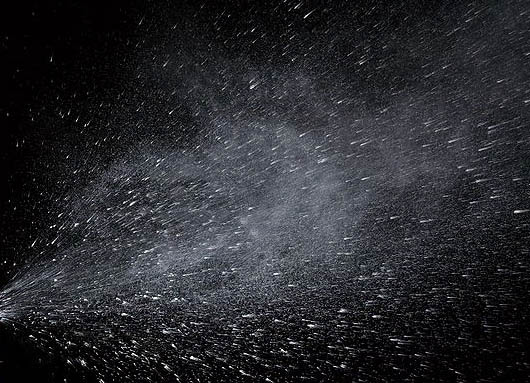THE FLU | What’s the difference between a Cold? | How To Avoid It


Flu and the common cold are both respiratory illnesses but they are caused by different viruses.
The cold winter months keep more people indoors. There’s more interacting with others while indoors. It increases increases the likelihood of spreading germs and virus.
WHAT IS THE FLU?
The flu, like the common cold, is a virus. Though it’s symptoms are most always much worse than a cold.
The flu can KNOCK YOU OFF YOUR FEET for a week, while enduring fever, severe muscle aches, joint pain, headache, chills, dry cough, and extreme tiredness — all with little or no desire to eat or drink.
When the flu strikes you down, there will be no doubt that you have it. It can be amazingly debilitating. You will be on your back, in bed.
The flu can kill you. Especially those who are old as well as the very young, and those who may have a weak immune system.
Telltale Sign That It’s The Flu
In my experience (though it has been a long time – thankfully) when I caught the flu, the onset was FAST. I mean from when I first suspected something was wrong until full onset of symptoms was only a matter of hours!
The common cold is low and slow. It’s usually a gradual decline. But the flu hits you hard and fast. That’s how you’ll know (other than much worse symptoms than the cold).
The flu is a respiratory illness caused by the influenza virus, not a gastrointestinal one.
When the virus gets into the body, it moves into the respiratory tract where it binds to cells and literally takes over their function by replicating itself and killing off the original cell… and then goes on to infect other cells.
This process happens countless times over without you ever (at first) realizing, until it eventually enters the bloodstream and flu symptoms begin to occur. Then of course, it’s too late. You have ‘the flu’.
Eventually, a healthy immune system will fight back, but it will take a while, a solid week of suffering and probably additional weeks of weakness.
The symptoms of the common cold can be similar, however the BIG difference is the SEVERITY.
Additionally, the common cold rarely spikes a fever, while the flu will spike a high fever. Once you actually get the ‘real’ flu (not a bad cold), you will definitely know it. It’s different.
HOW TO PREPARE FOR THE FLU
Once you have the flu, it will be too late to prepare or go to the store for food or supply. You will not be capable of doing any of that. Trust me on that, so plan ahead.
The number one priority while suffering from flu symptoms is to remain as hydrated as possible. The problem is that while sick with the flu, most people don’t have the desire to drink fluids or eat.
When dehydrated, drinks like Pedialyte or Gatorade can be good choices because they replace electrolytes that are lost. You SHOULD force yourself to drink fluids.
Also, have a thermometer to check your fever.
Try to keep the fever under control. Acetaminophen (Tylenol) and Ibuprofen (Advil, Motrin) help reduce fever. Aspirin is very effective for treating fever in adults. DO NOT give aspirin to a child unless your child’s doctor tells you to.
While suffering from the flu, the appetite is suppressed. But having simple ready-meals available will save pain and aggravation. Keep cans of “chicken soup” at home!
HOW TO AVOID THE FLU
THIS IS KEY! DO THESE THINGS AND YOU WILL AVOID THE SUFFERING!
WASH YOUR HANDS (read here)!
Avoid touching your eyes, nose and mouth during flu season. Germs and virus spread this way. Even if you’ve touched a infected doorknob, so long as you don’t transfer the germs to getting inside your body, then you will avoid it. There’s more to it though, read on…
Keep hand sanitizer in your car! Whenever you get back into the car after being in ANY public place, squirt some on your hands and rub them together. Make this a habit. Keep some at your desk, or at home, wherever…
Be sure that the hand sanitizer has at least 60% alcohol content. The following PURELL Advanced has 70% (good!) and kills 99.99% of germs:
(view on amzn)
Wash your hands often with soap and water, EVERY time you get home from being out in public. Get the germs OFF of your skin so that IF you touch your eyes, nose, mouth… there will be no germs to get inside your body (not foolproof).
Social distancing. Try to avoid close contact with sick people. ESPECIALLY vulnerable where you work and around people all day, some of whom may go to work while they are sick!
Read: When People Sick At Work Get You Sick
If someone sneezes nearby, hold your breath and walk further away. DO NOT breathe in nearby, else you WILL likely contract it.
Try to be aware and stop yourself when you’re about to rub your eyes, nose, or mouth.
Get into this habit of awareness!
You might decide to get a flu shot (KNOW THE RISKS).
HOW DO YOU CATCH THE FLU?
INDIRECT TRANSMISSION OF THE FLU IS COMMON.
You can catch the flu from rubbing your eyes, nose, or mouth after handling an object an infected person christened with a sneeze a few moments ago.
Flu viruses primarily spread when an uninfected person has direct contact (a handshake, inhaling sneezed particles, touching an infected surface) with an infected person.
Flu virus will survive outside the body from a few minutes to as long as 48 hours.
Flu generally remains active longer on stainless steel, plastic and similar hard surfaces than on fabric and other soft surfaces.
Continue reading: How To Survive Pandemic
